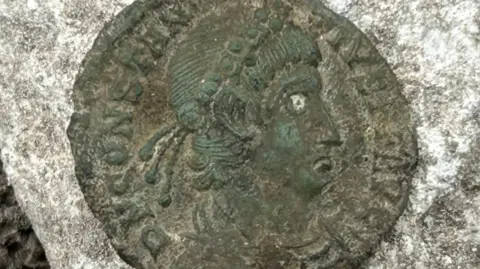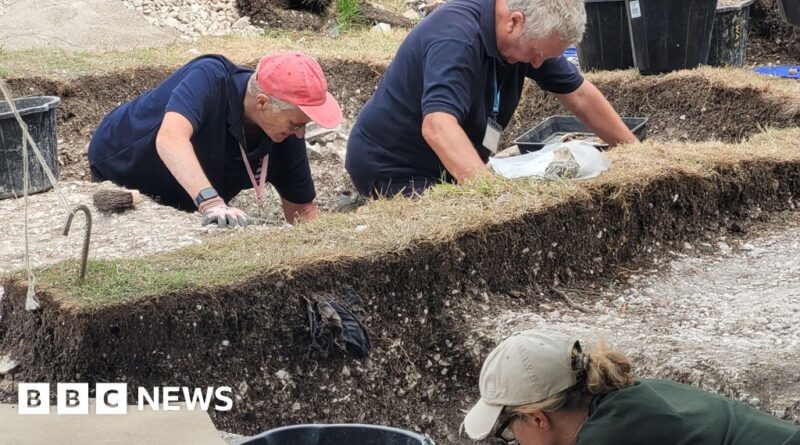Dig discoveries make Ferring a site ‘of national importance’
BBC News, South East
 Worthing Museum
Worthing MuseumFinds made at an archaeological summer dig have made the site one of “national importance”, according to an expert who led the project.
The dig, at Highdown near Ferring, West Sussex, began on 20 July, in a joint project by Worthing Museum, the Worthing Archaeological Society and the National Trust.
During its history it was a Bronze Age enclosure, a fort during the Iron Age, a Roman outpost and a Saxon cemetery.
James Sainsbury, curator of archaeology at Worthing Museum and project director, said the discovery of new graves makes returning for more excavations in 2026 critical.
 Worthing Museum
Worthing MuseumHe said: “It’s one of the earliest Saxon cemeteries in Britain. Highdown has the most beautiful and rare glassware from any Saxon cemetery in Britain.
“As of Tuesday, when we found the undisturbed grave, probably of a 16 year-old, we have to come back, because we found the beginnings of another three.
“There may be another significant part of the cemetery which was, until Tuesday, undiscovered.
“We are hoping for next year. The first thing we have to do this autumn is a geophysical survey, putting probes into the ground to find grave cuts, see how many grave cuts there are. It’s also dependent on funding.
“It would be remiss of us not to return and find out the extent and the age and period of this extra burial area.”
 Worthing Museum
Worthing MuseumAmong the artefacts discovered are swords, rock crystal beads, a bronze hair pin and many late Roman coins.
The site had previously been excavated by Victorian archaeologists, who had left their own mark.
“We found a bottle of port at the bottom of a grave cut,” said Mr Sainsbury, “next to an old pelvic bone that they weren’t interested in.”


